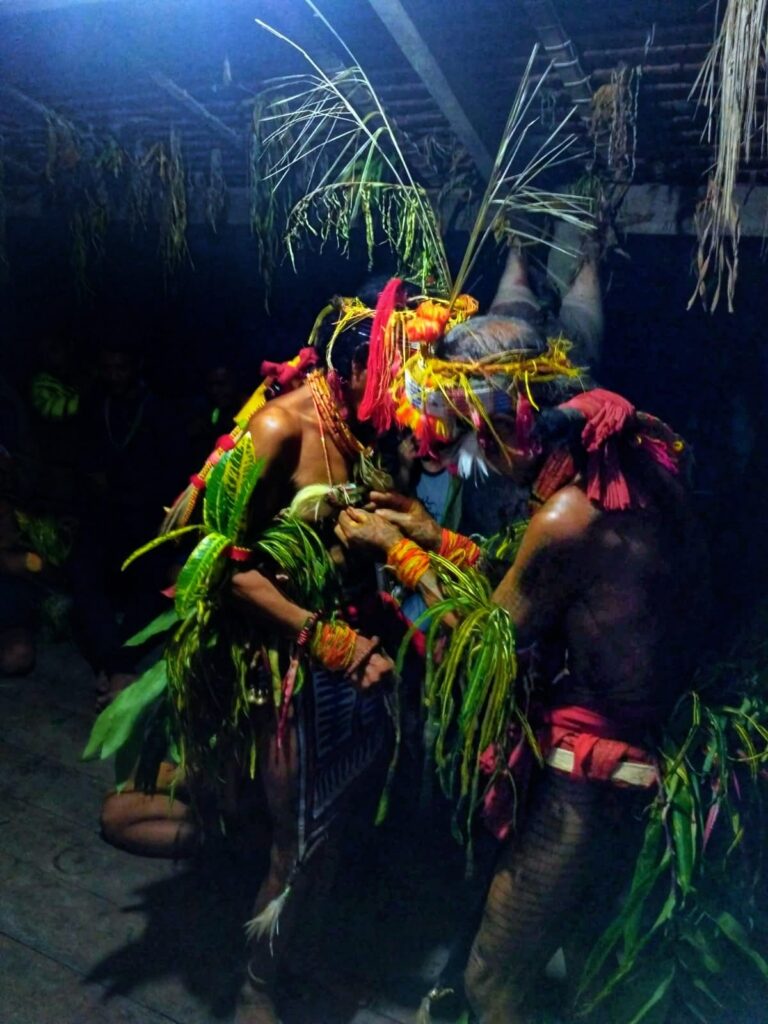The shaman and I alternate. He circles the mother in labour, burning plants and ringing bells to release the negative energy in the room. When contractions start, it is our turn: and eventually together we deliver the baby.
Traditional healers are indispensable to indigenous communities in Indonesia. Even in severe medical cases, many patients will first seek help from traditional healers before they come to the hospital or clinic. Yet sometimes their condition has deteriorated too far by the time that they arrive, and there is little we can do to help.
During my four years as a doctor on the Mentawai islands in Indonesia, I wondered why so many patients preferred traditional healers to modern medicine despite the availability of health facilities. I spoke with community members, traditional healers, and medical staff, and read anthropologies of the region.
Many people believe on these islands that there are two types of disease: one from bad spirits and energy, and one from unhealthy organ. Traditional healers can cure the former, while health workers can only assist with the latter. Not only are health workers believed to be ill-equipped to deal with spiritual diseases, but health centres appear to worsen their disease if haunted by the malevolent souls of former patients. Moreover, because patients delay seeking medical treatment, some die soon after arriving at the hospital—which further confirms people’s fears.
Frontline healthcare workers’ perspectives are also important to gain a fuller picture of the challenge. Although many of these health workers are Indonesian, few are indigenous to these islands and thus struggle to understand patients’ views. These workers can become frustrated and dismissive of patients’ preferences for traditional healers. These attitudes further discourage patients to use health centres as their first resort.
Educating the community on the causes of diseases is insufficient to influence their behaviour. Trust needs to be gained through a collaborative approach. My first step was to visit patients at their homes with nurses. I started working alongside traditional healers when requested by patients. As I did so, I explained the nature of the disease and the benefits of using nearby healthcare instead. When conducted consistently, both patients and shamans feel appreciated rather than judged.

Two examples illustrate the process and its benefits. In one case, I agreed to assist a delivery process at home accompanied by a midwife. Upon entering the house, we found shamans in the middle of a procession with bells, plants, and chants. Sitting together with the shamans, the expectant mother and her family members, we explained what would be necessary for a safe birth. The shamans explained the necessity of their rituals: to release negative energies that interrupted the birthing. We agreed to alternate. In between contractions, the shamans did their rituals and during contractions, we took over and proceeded with the delivery. We continued until the baby was born.
In another case, a patient refused to come to the hospital after being bitten by a snake. The patient and his family were sceptical of modern medicine’s effectiveness in a snake bite case, and especially the idea of getting an injection. They insisted on getting an initial treatment from a shaman. This time the process involved a lengthy explanation of the adverse outcome of delaying treatment. I re-told a similar case from my previous experience with a patient whose limb eventually had to be amputated due to an abscess. I suggested that the patients bring shamans to the healthcare, where they would be allowed to proceed with rituals concomitant with biomedical treatment. Both the shaman and the patients agreed to this idea.
This approach would be further strengthened by the regulation of traditional medicine. Without this regulation, traditional healers’ advice sometimes would be contradictory to modern medicine causing detrimental effects. For instance, dietary restrictions by the shaman such as forbidding fish and eggs would reduce protein intake which is essential for the healing process if the patient happened to be inflicted with tuberculosis. The hygiene of herbs concocted by shamans for open wounds is also a concern, as it is a source of secondary infections.
Although traditional healing is currently regulated under the Health Law of Indonesia, several challenges hobble this approach. Few traditional healers are registered under the law, and most shamans in rural areas are not part of any formal association. There is no recognised standard for traditional medicine due to its heterogeneity, and shamans are not currently covered by malpractice regulations. This is a complex matter which requires further research.
Nonetheless, by working with traditional healers, rural patients would be more comfortable utilizing health facilities promptly. Shamans are more likely to refer their patients to a health facility when their expertise is acknowledged. Rather than being an obstacle to modern medicine, collaboration with traditional healers will be a valuable step in expanding healthcare coverage and improving health outcomes.
About the Author: Shanthi Levanita is an Indonesian medical doctor with experience in providing health care in community health centres in rural areas. Upon completing her master’s degree in International Health and Tropical Medicine at University of Oxford, she developed interest in improving health system by ensuring equitable health access in resource limited settings. You can view her previous work of collaborating with Shamans in this short documentary (click for version with English subtitles here).
Competing interest: None
Handling Editor: Neha Faruqui